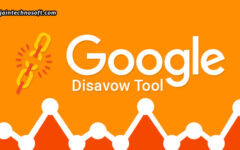
We all know how important link building has been, earlier and today too. Now, let us get into one specific part of link building – “image link building”. Image link building is a tricky skill, as its different from traditional link building; and doing it right requires a balance of creativity and talent. So, basically, you can say that image link building is actually an art. And, here’s how you do it.
Identifying your link targets
- There might be some certain websites or platforms you wish to acquire links from. Identifying the influencers on every such platform and those you can get in touch with, along with the top pages on those sites can be a good deal of information to help. There are a number of tools that can help you gain such information, such as Open Site Explorer, SEMrush, SimilarWeb, and Moz OSE.
- You can also dig into some of your old popular images that have an opportunity to bring in links, with a bit of revamping and updating. This can be done with the help of BuzzSumo’s infographics filter, where you’ll need to enter the industry or topic you are trying to address, and then search by the infographics to see if you can come across anything relevant.
- Another action you can take is transform popular content into an image or infographic to bring in links from various platforms.
Doing a keyword research
- Next, you need to understand the intent of people searching for the product, service, topic, or whatever it may be. Evaluate keywords with link intent. That’s because keywords with statistics or facts after the keyword have link intent baked into the search query. People are searching for something to link to, to include in a presentation or article. Thus, it has the basic link intent.
- Also, check for any keywords and pictures that have good search volume with opportunities. Evaluate what is currently ranking to understand what is working and what is not.
- You may also evaluate keywords to check whether or not the image carousel shows up for those searches. If they do, it certainly depicts the searcher intent that leads to images. You can thus work your way up to optimize for that image.
Providing value
Now that you know where you want to link from, you also need to provide value in some way. It could be a bookmark or reference, a simplified data visualization, curated images, or the like.
Optimizing your images
Now, you need to optimize your infographics and images. Some basics that you must focus on include the image title, Alt-text, and size.
- The title of your image should contain a keyword and explain what you’re trying to convey.
- You must include an Alt-text that explains what the image is about, even if the image doesn’t load.
- The images you put up shouldn’t be too large in size, or it may cause page speed issues. So, you must always compress your large images.
- You must also set up your images in a way that they show up appropriately on different devices in different sizes. You must thus revamp a single image to show suitably on a smartphone, tablet, desktop, and everywhere else.
Promoting your images
Now that your images are ready and optimized, you want to share them on popular platforms. Whether new images, or updating the old, sharing them is very important. You can approach influencers to help share your images.
Monitoring the image SERPs
Lastly, you can monitor the image SERPs. For this, you can go to Google and click the Images tab, and then the small camera icon, after which you can upload the images to see where else they are on the Web. This will help you know where all the image is being used, and whether or not you are getting a backlink. If you find the image being used on different websites, you could do some basic outreach to get the link.
Once done, you need to stay in the loop – continue to promote your images – continue to monitor – continue to outreach – and push to maximize your link building efforts! If all of this is too much for you to handle, you could simply hire the best SEO services in Bangalore to help.



